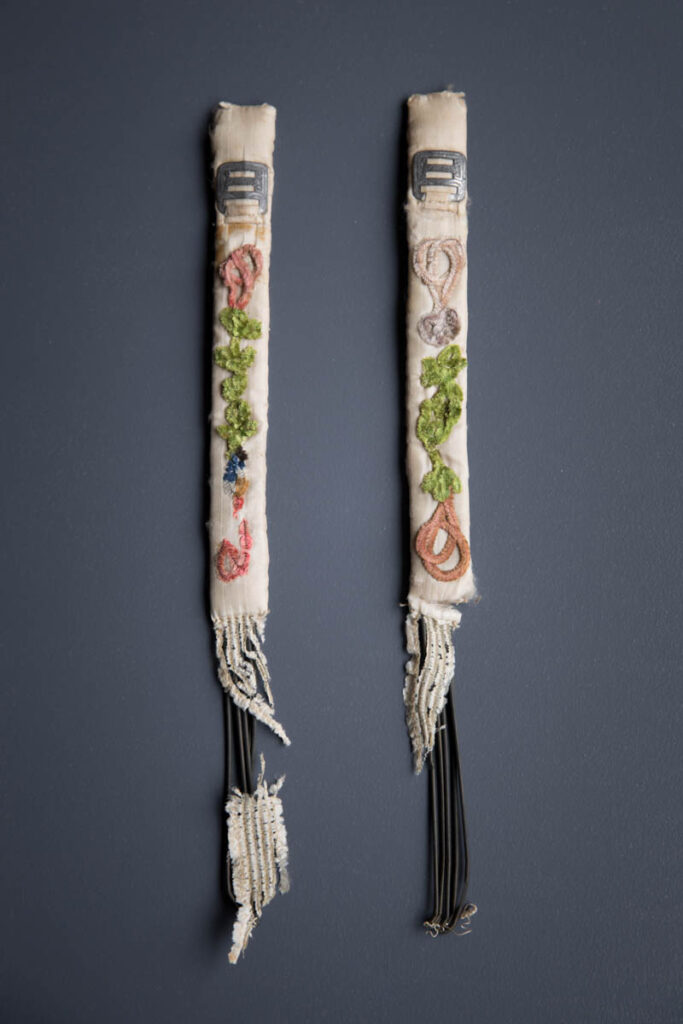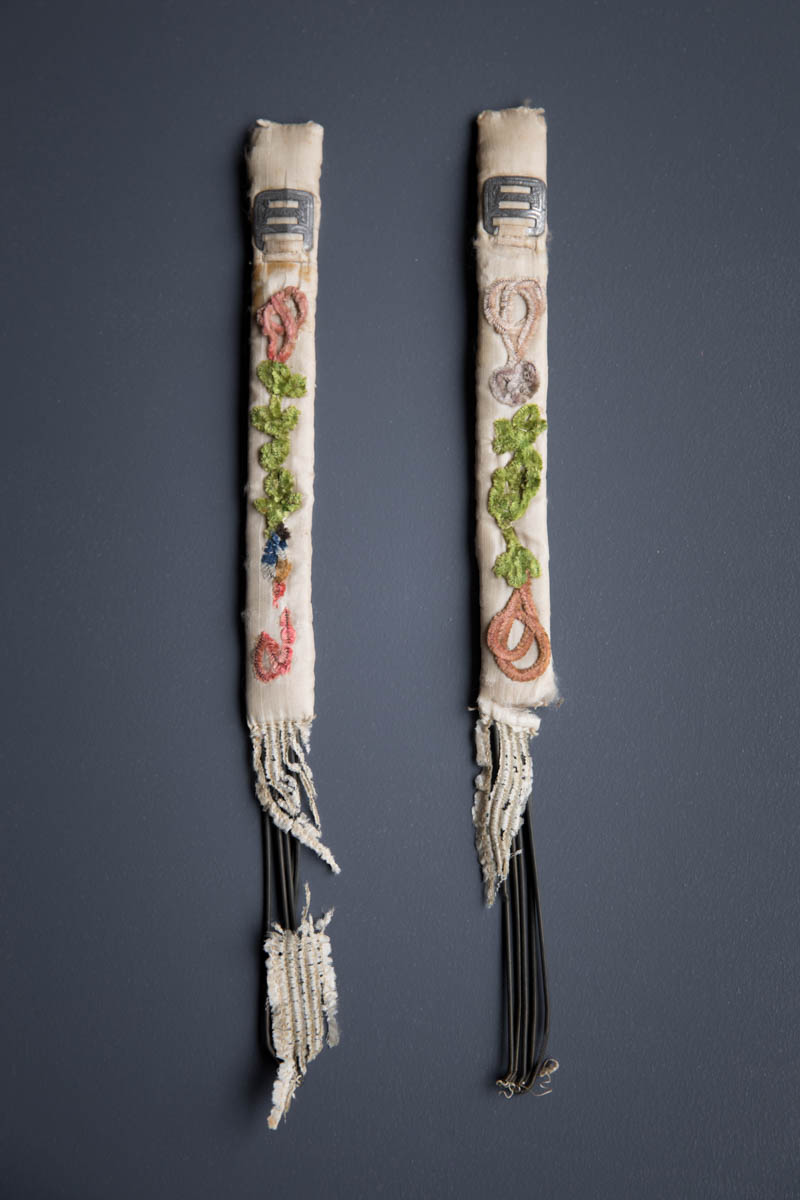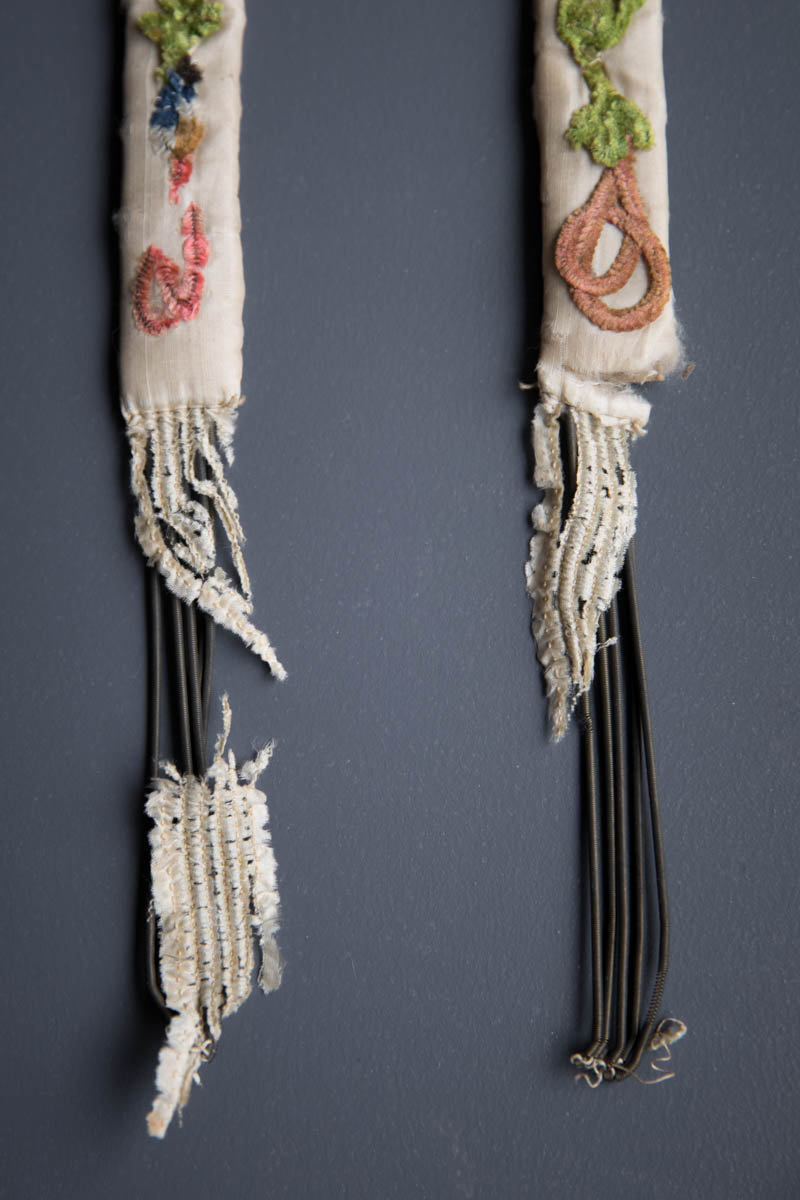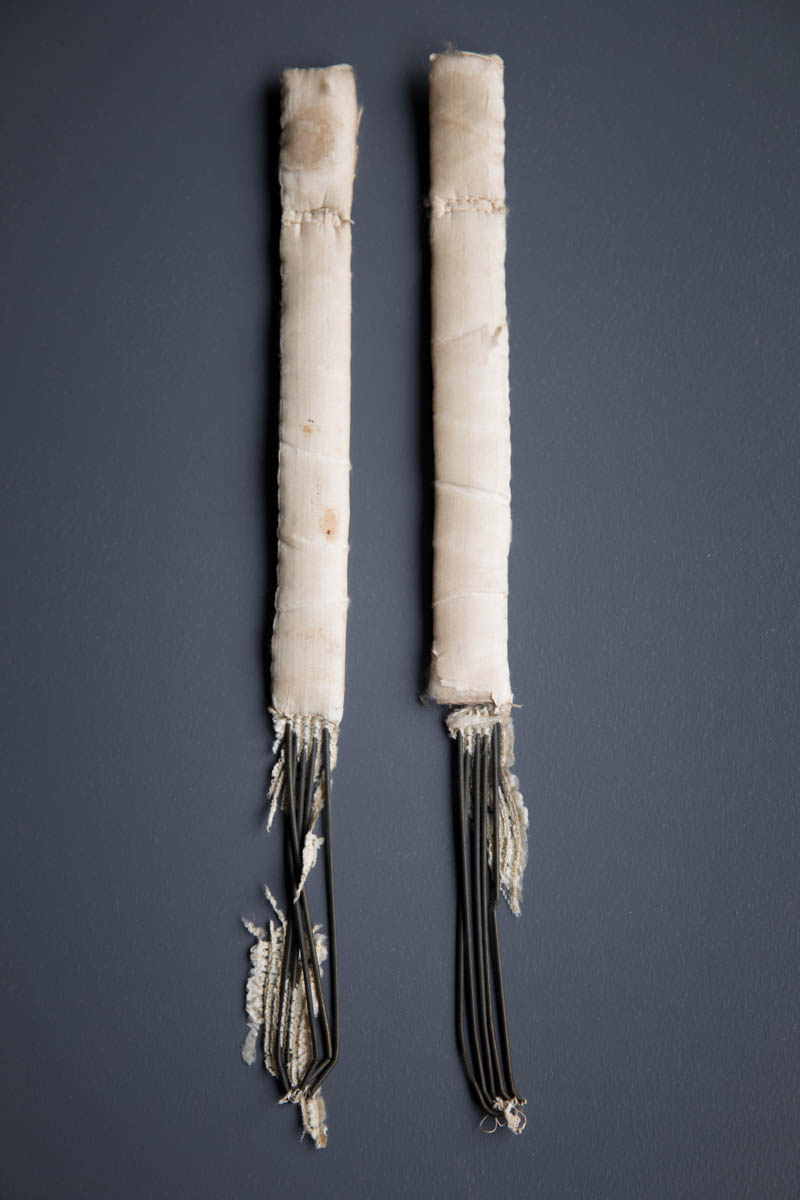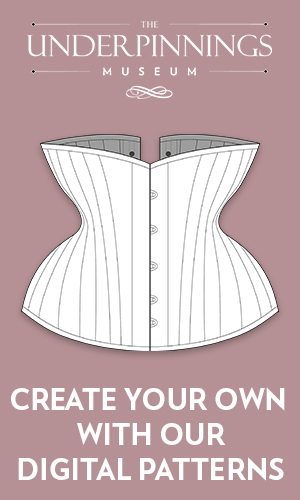Date: Late 18th century
Origin: Great Britain
Fabric: Silk, fine metal springs
Brand: Custom made
Before the invention of suspender belts, stockings and garters were commonly worn by all genders. There were no discernible design differences between the stockings and garters worn by men and women, with decorative motifs such as floral patterns a common feature.
This pair of early garters were made with strips of padded silk, embroidered with textured chenille embroidery. Elastic was not invented until the early 19th c., so it was relatively rare to see stretch in textiles before this time. There were two main possibilities: either hand knitting, or in the case of these garters, incorporating metal springs.
Because of the age and poor storage of these garters, part of the silk casing has largely disintegrated, which allows us to see this stretch innovation within. The silk casing was originally stitched with narrow channels, each encasing one of these springs with the fabric gathered when under the springs’ tension. The end of the channel was originally attached to the other half of a buckle (unfortunately now missing), which would fasten to the buckle half on the padded strip. These garters would have been worn just above the knee to secure stockings in place and prevent them from rolling down. It is likely that the stretch offered by the metal spring panels would have provided greater comfort than the other garter option of the period, which used a ribbon tie as a fastening.
From the collection of Karolina Laskowska
